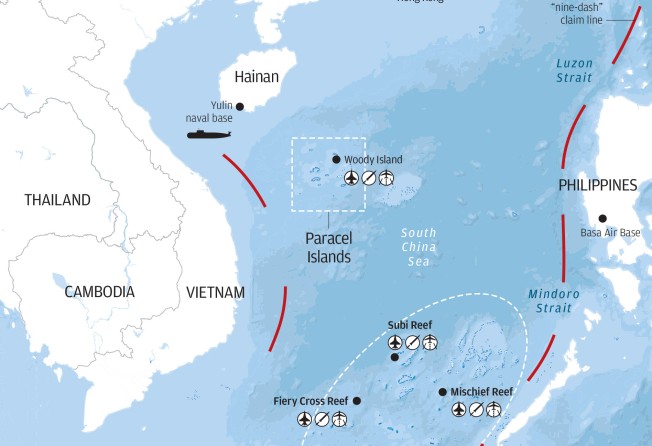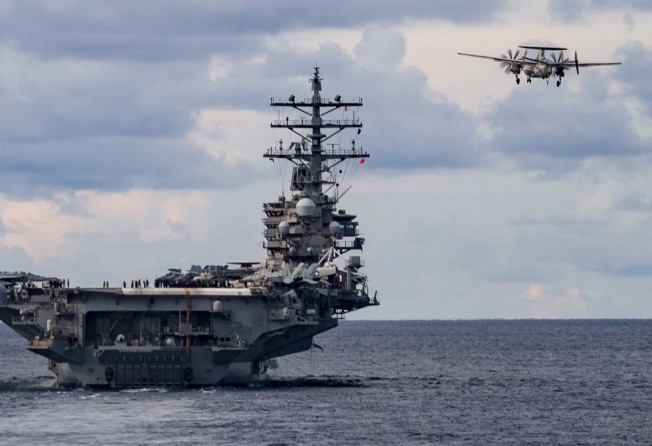
06:24
Explained: the history of China’s territorial disputes

A prominent US think tank, the National Bureau of Asian Research, has just released a report on China’s assertiveness in the South China Sea that has received considerable publicity. It purports to “identify historical trends of assertive behaviour between China, the Philippines, and Vietnam and assess the implications for the disputes in the South China Sea”.
A major conclusion is that “China’s assertiveness in the South China Sea has less to do with US global power and international policy than is commonly assumed”. But the analysis fails to see the wood for the trees and in doing so draws unwarranted conclusions.
First and foremost, the report ignores its own advice. It says “the significance of state action in a contested maritime space often depends heavily on the context”.
Indeed, the fundamental problem with the analysis is that it ignores the US-China strategic contest for domination and assumes that China’s assertiveness is driven by its conflicting claims to rocks and ocean space or resources with rival claimants like Vietnam and the Philippines. It also assumes that this assertiveness can be measured by analysis of “the types of actions the contestant states have been taking, and where”.
This methodology may be applicable to the behaviour of Vietnam and the Philippines vis-à-vis each other or China’s actions. But the driving factor behind China’s own behaviour is its historical perspective and current strategic struggle with the US. Indeed, China’s actions towards rival claimants cannot be delinked from this broader context.
To China, the South China Sea historically provided access to its vulnerable underbelly for Western invaders, who conquered and colonised it. This perception extends to the modern era, both in strategic terms and in the sense that former Western colonies are plundering the area’s resources with the connivance of their former colonial masters. Such a perspective explains China’s desire to control the waters.
Moreover, the US-China contretemps is a behind-the-scenes contest of strategies and technological developments rather than an obvious action-reaction dynamic. The South China Sea is currently a nexus of the US-China strategic contest for regional hegemony.
They have converging strategic trajectories. China is developing what the US calls an “anti-access/area denial strategy” designed to control China’s “near seas” and prevent access by the US in the event of a conflict.
The US response is a plan of action intended to cripple China’s command, control, communications and computers used for intelligence, surveillance and reconnaissance (ISR). Thus, ISR is the “tip of the spear” for both, and both are trying to dominate this sphere over, on and under China’s near seas.
In addition to providing access to colonisers and harbouring vital trade routes, the South China Sea provides relative “sanctuary” for China’s retaliatory strike nuclear submarines based in Yulin on Hainan. These submarines are its insurance against a first strike – something the US, unlike China, has not disavowed.

The US wants to deny China this sanctuary. It uses ISR probes to detect and determine the capabilities of China’s submarines, as well as to track and, if necessary, target them. It is also mapping the potential “battlefield”.
To China, it is the US that is being assertive in the South China Sea, with its 2011 “pivot”, long-standing and now stepped-up freedom of navigation operations, frequent projections of power (aircraft carrier strike groups and nuclear capable bombers and submarines) and its provocative ISR probes.
The administration of Donald Trump increased the tempo of US military activities in the region, challenging what it saw as China’s attempts to undermine the US-led international order. The situation became so dangerous that Beijing thought the US was going to attack its installations in the South China Sea. President Joe Biden has continued this pace.
In the past decade, the US has markedly stepped up the frequency of its aerial and underwater probes. It now undertakes an average of four missions a day – about 1,500 a year – over the South China Sea. Moreover, some are coming ever closer to China’s coast; one was just 25 nautical miles away.

A leaked US Navy-National Security Agency report revealed that the US has “the ability to locate and collect transmissions to or from Chinese submarines and to correlate them to specific vessels”. That report also revealed that some ISR missions purposely “tickle” targeted militaries to react, thus creating communications that can be intercepted.
China’s response has been to develop, on some of the South China Sea features it occupies, the capability to detect, jam and, if necessary, neutralise US ISR in times of conflict.
For China, these installations are key to its existential security. Indeed, these installations, supplemented by a combination of satellites, airborne early-warning aircraft and unmanned aerial aircraft “create a naval bastion for its sea-based nuclear deterrent”.
All this means that the fundamental factors driving the situation in the South China Sea must be deduced rather than observed. Moreover, developments in strategy and technology are not necessarily linear and a “history” of actions and reactions may be misleading.
The report does acknowledge that “some assertive actions aimed at other claimants have been indirectly aimed at undermining the credibility of the US position in the region”. Indeed – and that is a much more important factor than the report gives credit.
It also recommends that the US should “strengthen its regional military presence in ways acceptable to the regional states to offset PRC strategic advancement toward control of the region”. This is the closest the report comes to acknowledging the fundamental strategic context of the situation. But it fails to incorporate these insights into its analysis.
The report concludes with a plea for more data. But the problem with the analysis is not a lack of data, but a lack of understanding of the fundamental forces driving China’s behaviour in the South China Sea.
Mark J. Valencia is an adjunct senior scholar at the National Institute for South China Sea Studies, Haikou, China